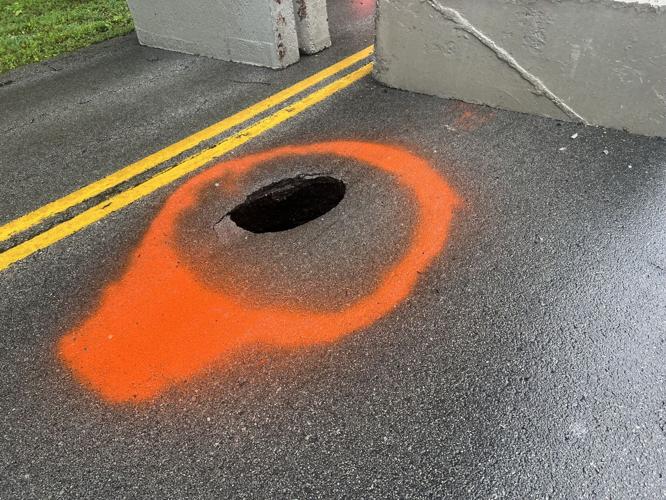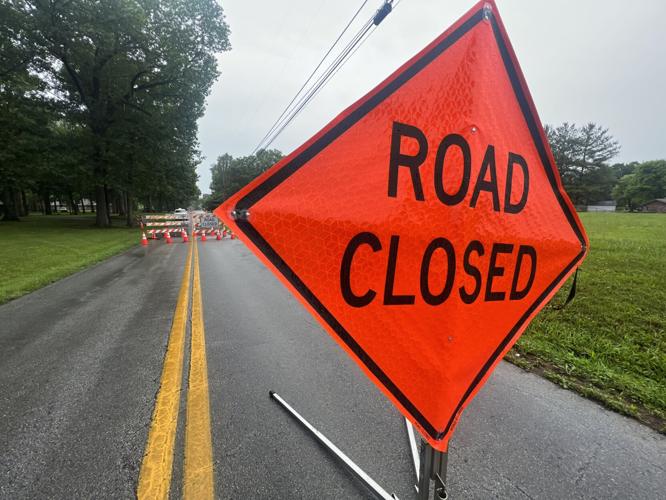LOUISVILLE, Ky. (WDRB) -- Sinkholes, large and small, seem to be popping up all around Kentucky. There are small ones near homes and schools or large ones, like the famous National Corvette Museum sinkhole.
But even the smaller ones — like a recent hole that opened up in Bullitt County this week and shut down part of KY 1450 — can still cause disruptions.
And as it turns out, there's something pretty big below the surface that makes it a lot more common.
It's called karst, a type of landscape that forms over soluble rocks such as limestone. And experts say about 60% of the commonwealth contains limestone.
"Natural water — ground water, soil water — becomes slightly acidic, and, over very long periods of time, that acidic water can erode those rocks," said Chuck Taylor, a groundwater hydrologist and head of the water resources section at the Kentucky Geological Survey (KGS).
When that happens, it can cause things like caves, springs and even sinkholes. According to the map by the KGS — seen below — many of the state's largest cities, including Louisville, Lexington and Bowling Green, sit where karst landscaping is more common.

A map from the Kentucky Geological Survey shows many of the state's largest cities, including Louisville, Lexington and Bowling Green, sit where karst landscaping is more common.
All three of those cities have seen large sinkholes in the past. Prized cars were swallowed in the National Corvette Museum in 2014, and another sinkhole made headlines in 2019 at the Louisville Zoo. Even just this week, a new sinkhole formed outside a Bowling Green elementary school.
Taylor said there are a lot of different reasons why sinkholes form.
"It may or may not necessarily involve the underground flow systems and caves that develop in karst," he said. "A lot of homeowners experience features like sinkholes on their properties that are resulting over things like buried utility trenches."
"I'd say quite a few of the sinkholes I've gone to check out for people involve a situation like that, where it's more of a human-created sinkhole."
Taylor said larger karst sinkholes would likely be more of a problem further south than they are in Louisville due to different rock types. Still, he said they could happen here locally and said to be aware of any drainage or runoff work being done near homes that could exacerbate a problem.
He also said to be aware of any cracks to a wall, foundation or in your basement. Another sign a sinkhole is forming are small depressions or funnel-shaped openings called cover-collapse sinkholes.
Sinkholes are hard to predict but are always possible if the geological conditions are right. Tom Rockaway, a civil and environmental engineering professor at the University of Louisville, said even a period of heavy rain could contribute to the problem.
"Sinkholes are going to develop as a natural process," he said. "As we have changing weather conditions, our soils and subsurface materials are going to respond."
Related Stories:
Copyright 2023 WDRB Media. All Rights Reserved.
















